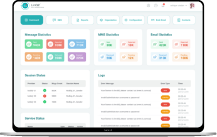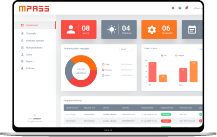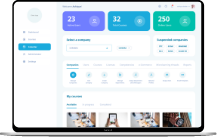Insider Threats in Cyber Security
Organizations tend to only focus on setting cyber security measures for potential threats and intrusions made by external circumstances. Unfortunately, they undermine the possibilities of a trusted employee launching a cyber-attack against them. This negligence resulted in 34% of businesses being affected by an insider threat on a yearly basis. This cyber security risk does not only leave the organization vulnerable but is also viewed as an easy target for internal and external threats.

Whoever has authorized access to sensitive data, either it being an employee or a partner (which sometimes referred to as Third-party risk), is considered trusted and hence, can generally fall into an internal threat, the difference would be on the intent: is it malicious? or are just merely being irresponsible.
Keep on reading to learn more about the two types of insider threats and how you could prevent being exposed to their threats.
Two types of insider threats in Cyber Security
So, let us begin with the definition of an insider or internal threat. It simply refers to the possibility that an individual within an organization, an insider, taking advantage of their authorized access of the organization’s data be it database or servers for malicious intentions to harm. But in some cases, an insider threat could be someone who unintentionally puts the organization at risk.
1- Malicious insider:
A malicious insider could be someone who’s either a current or former employee, partner, or vendor who has ill intentions to expose or damage the company’s confidential data by abusing their authority of accessing servers. They do this either for financial or personal gain. The employee may have grudges against the company and decides to penetrate the company’s cyber defenses for personal satisfaction. Or in some cases, the individual could collaborate with a hacker group or a competitor to sell the desired information. For example, in 2020, an employee at Tesla was approached by a cybercriminal to install malware in the company’s servers in exchange for $1 million, but the employee rejected and informed officials. In this case, the employee was smart and made the right choice but if an avaricious employee was offered this opportunity, then things would have turned out differently. Statistics reveal that 55% of organizations believe that authorized users are more likely to be a threat.
2- Negligent insider:
This type of insider threat causes harm to the company unintentionally. Almost 2 out of 3 insider threat incidents occur due to negligence (2022 Ponemon Cost of Insider Threats Global Report). This could be a result of their lack of knowledge on how to protect their data, which is why it is recommended for organizations to continuously educate their employees on cyber security topics. Simple tasks that are unknown to them such as logging out of their accounts, not using public Wi-Fi, and not doing work tasks on public devices could protect their company. Also, 38% of cybersecurity experts deem phishing as a major cause of insiders accidentally exposing an organization (Fortinet Insider threat report 2019).
How to prepare against insider threats in Cyber Security ?

– Organizations should be regularly monitoring the activity of the people who have authorized access to sensitive data. It could help in detecting suspicious activity early on to stop any harm intended towards the company. This helps to easily pinpoint the insider, as it is extremely difficult to identify them when the attack occurs
– With negligence being one of the main reasons for unintentional insider threats, training and educating your workforce is crucial. Investing in phishing simulators to test your employees will help in reducing the chances of them falling for phishing traps. Also, teaching them how to identify suspicious activity could help the company halt any possible cyber-attacks, and this could save the company millions of dollars. The average amount paid to resolve an insider attack for small organizations can reach up to $7.68 million and for larger organizations $17.92 million (2022 Ponemon Cost of Insider Threats Global Report).
– Create a Cybersecurity plan for insider threats. As mentioned previously, organizations usually focus on how to mitigate and prevent attacks from external threats, neglecting the possibility of insiders. It is essential to enforce a policy and security measures for such situations.
– Lastly and most importantly, is to protect your data! Always take the extra step to determine the safety and privacy of your digital assets and data. Remember it is much more difficult to mitigate an internal attack than an external one.
Conclusion:
With the number of insider threats continually rising, organizations need to educate themselves on how to protect their data from any malicious intent. It is never too late to take the initiative in wanting to advance in security measures to prevent future threats. There are always new ways for criminals to achieve their goals so be up to date.
Always be a step ahead in Cyber Security!
Share this article:
Popular

Keeping Our Kids Safe Online
A Guide For Keeping Your Kids Safe Online Parents and all who are concerned about the well-being of our young kids in this digital world. Today we will discuss a topic of utmost importance: digital safety for kids. Yes, the Internet can be a very dangerous place for our young kids , especially with the spread of phishing scams. So, let us dive deeper and present to you, in this comprehensive article, a comprehensive guide on digital safety for kids. What every parent needs to pay attention to. Internet risks for kids: The internet has become a big part of ...
17th Jul 2024
Could you be hacked through Slack?
Could you be hacked through Slack? The usage of collaboration platforms such as Microsoft Teams and Slack has significantly increased, with nearly 80% of employees utilizing them. These platforms are designed to be convenient and easily manageable for daily conversations within organizations. However, what makes them easy and convenient also renders them vulnerable to cyber threats and attacks. In 2021, for instance, 780 gigabytes of data from the gaming giant Electronic Arts (EA) were breached through Slack! During the same year, a security vulnerability in Microsoft Teams was exploited to launch a widespread cyber attack on ...
12th Jun 2024
Tips To Be Cyber Protected While Traveling
Goodbye worry! A safe journey in the digital world With all the modern wonders of the digital world, we trust communication technologies on our journeys. There is no doubt that the travel experience is always more beautiful and enjoyable, but it can also pose a range of risks, especially when it comes to cybersecurity. Travelers may fall victim to phishing, Wi-Fi network spying, and theft of their personal data, which can make their journey filled with worries and tension. With the increasing prevalence of cyber threats, it is essential for travelers to follow some guidelines to protect their devices and ...
1st Apr 2024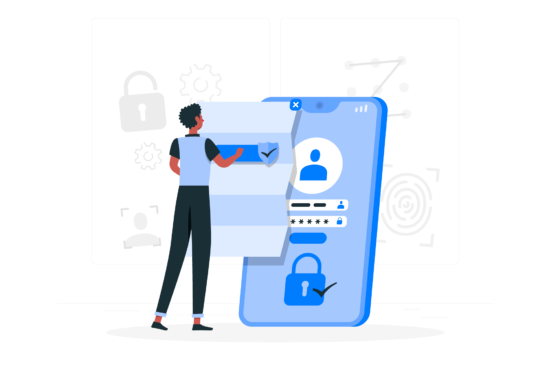
Push Authentication: A New Era in Multi-Factor Authentication
Want To Say Goodbye To Passwords and OTP Codes? Discover Push Authentication! It is easy for your password to be compromised through phishing attacks, even if it meets the cybersecurity strong password standards and is difficult to predict So we must get to know the technique of Push based Authentication. Some may recommend that you use Multi-Factor Authentication (MFA) to increase your security. Multi-Factor Authentication (MFA): MFA is the process of logging into your account through multiple steps. It requires you to enter more information, not just your password. But there is another obstacle that arises when using such ...
14th Feb 2024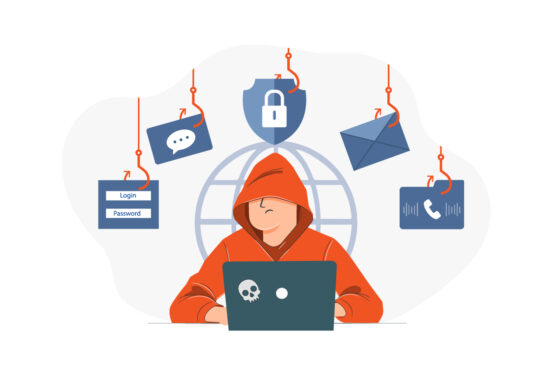
The Difference Between Phishing Attacks
The Difference Between Phishing Attacks Phishing attacks are harmful attacks used by criminals to steal personal and financial information from individuals and businesses. Attacks on individuals and businesses are becoming more common as we use the internet and technology more often in our daily lives. Phishing attacks involve the use of dishonesty and fraudulent methods to fool consumers into believing they are interacting with the trustworthiness of an unsuspecting destination, such as banks, email companies, or social media platforms. But what is the difference between phishing attacks? How can individuals and organizations protect themselves from such attacks? That is what ...
17th Jul 2023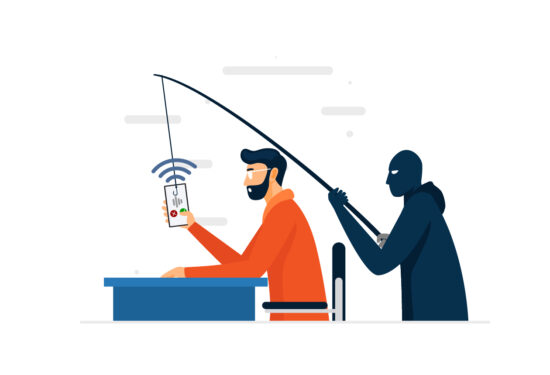
Understanding of the Vishing Meaning
Understanding of the Vishing Meaning Vishing, a combination of “voice” and “phishing,” is a sophisticated form of cybercrime that exploits voice communication to trick individuals and extract sensitive information. In this comprehensive guide, we will explore the meaning of it, the dangers associated with it, and effective methods to protect yourself against these malicious attacks. What is Vishing meaning? Vishing refers to the fraudulent practice of using telephone services to trick individuals into revealing personal and financial information. Scammers often pose as trusted organizations or individuals to gain their victims’ trust. By using social engineering tactics and manipulating ...
5th Jul 2023
How could Artificial Intelligence tools threaten cybersecurity
How could Artificial Intelligence tools threaten cybersecurity? As Artificial Intelligence Tools become more sophisticated, they can be used to launch cyber attacks that are more complex and difficult to detect. In this article, we will explore how AI tools could threaten cybersecurity and what measures can be taken to mitigate these threats. Artificial Intelligence (AI) became popular today, and it is one of the most important terminologies in our current era, though it has been around since the 1950s. AI relies on the development of systems and technologies that help to do tasks by the simulation of human intelligence ...
11th May 2023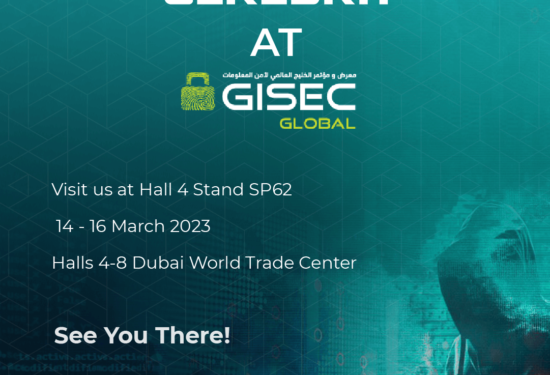
Cerebra is participating at GISEC 2023
We are thrilled to announce that we are going to GISEC 2023 and would like you to join us! Visit Cerebra at GISEC 2023 Hall #4 stand SP62 in Dubai World Trade Center from 14-16 March. GISEC Global is the leading gathering ground for the cybersecurity community worldwide. Top cybersecurity enterprises from 40 countries, CISOs from major corporations across the Middle East, Africa & Asia, government dignitaries and cyber leaders, regional and international innovators, and global experts collaborated to lead cybersecurity transformations across sectors and nations decisively. Get a chance to preview our latest Cybersecurity products: PhishGuard is the Phishing stimulations solution that raises the employees cybersecurity awareness ...
13th Mar 2023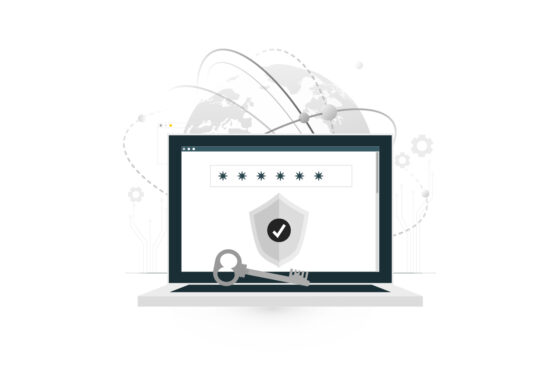
6 Tips to create a strong password easily!
Create a strong password easily! Today it’s very important to everyone who have an account either on social media or any other websites or services to Create a strong password, because you have to treat your password as your best stuff’s and protect it from others. Learn now the easiest and best tips you have to follow to make a strong password.. What is Password? A password is a string of characters that provides access to a digital system or service. It is a crucial security measure that helps to protect sensitive information from unauthorized access. Passwords can be as simple as a word ...
1st Feb 2023
